HOME SAFETY
Farm Safety

Farming is one of the leading industries in Pennsylvania and a place for families to call home. Farms, however, can be dangerous to your child’s health if you do not implement safety measures that will help ensure their safety. Regularly make time for family safety briefings that include instructions for handling and reporting emergencies.
Maintain safety zones around buildings and structures. Some structures are extremely dangerous places for children. Special fencing and barriers need to be placed around or over these structures so that children cannot enter them. Children should be able to reach feed and water containers from outside an animal’s pen or corral.
Dangerous Areas
- Silos – These are particularly dangerous because of gases and running machinery during the filling and unloading of silage and grains.
- Grain bins – The grain inside can turn into “quicksand,” especially during bottom unloading. Many children have drowned in bins being unloaded.
- Farm ponds and manure pits – These are potential drowning sites with gasses and low oxygen hazards. Always make sure that ponds and pits are inaccessible to children.
- Barn hay-drop openings – Fractured skulls and deaths have been caused by falls through a hay-drop opening during play.
Animal Safety
One of the leading causes of injury to children on a farm is animals. Before allowing your child to interact with animals, make sure they are able to be calm, quiet, and steady in their motions. If your child cannot listen to you or follow directions, then they are too young to be interacting with animals. Constant adult supervision is a must for young children around animals. Before allowing children to approach an animal, it is important for caregivers to teach them a few safety rules and demonstrate the right way.
Safety Tips
- Approach with a slow, steady pace. Avoid approaching from blind sports and ensure the animal is aware of your presence and proximity.
- Speak quietly with your hand outstretched.
- Stop close enough that the animal may sniff or reach toward you. As long as the animal remains calm, continue to approach at about the shoulder area.
- Pet the animal by keeping the fingers together and the hand flat. This will reduce the risk of being bitten.
- Consider any other risks that might exist (such as loud noises or uneven surfaces). Do not permit children to be around mothers who are still feeding their babies, adult males, or ill animals. These animals can be protective, aggressive, and less predictable, making them more dangerous to children.
- Avoid animals during feeding time.
- Do not let children have contact with wild animals, especially if they show signs of illness or abnormal behavior.
- Always wash your hands before and after touching or handling animals.
- Know the warning signs to recognize when an animal is distraught or scared. Each animal has a self-defense mechanism (claws, biting, kicking, running), some animals have more than one. Be aware of different mechanisms to provide proper handling of the animal and decrease the likelihood of injury.
Chemical Safety
- Pesticides and other toxic materials like dairy pipeline cleaner should be kept in a locked storage area. Also, secure treated seeds and fertilizer.
- Place appropriate warning decals on tractors, machines, grain bins, silos, wagons, and any other potentially hazardous item. Explain the significance of these warning symbols to children.
Grain Safety
There are many types of structures where grain in various conditions is stored. One of the most common types in Pennsylvania is the grain bin. Grain bins store low moisture grains until needed. Most grain bins are designed to unload from the bottom center of the bin. High moisture grains are often stored in tall, small diameter silos, which present their own hazards. Some of the same hazards that are found in grain bins are also present in grain storage silos.
Four Main Situations that Pose Entrapment Risk
- Entrapment of a worker by flowing grain
- Collapse of a grain bridge
- Avalanche of a grain wall
- Entrapment of a worker using a grain vacuum
Safety Tips
The following tips can reduce the risk of grain bin entrapment. While some of the tips may seem simple or trivial, they can save your life.
- Place entrapment warning decals on grain bins and grain transport vehicles.
- Prevent unauthorized entry to grain bins and grain transport vehicles, especially by children.
- Make sure all workers and children are aware of entrapment hazards.
- Keep grain in proper condition. This may include the use of mechanical stirrers to prevent the grain from molding. Remember, out of condition grain was cited as the leading cause of adult entrapments.
- Use inspection holes or grain bin level markers instead of entering a grain bin.
- Enter a grain bin or grain transport vehicle only if it is absolutely necessary. Use a body harness secured to the outside of the bin or vehicle.
- Use a pole to break up possible grain bridges from outside the bin.
- Lockout/tag-out all auger controls before entering a bin.
- Have at least two observers present during grain bin entry. Children should not enter a grain bin.
- Establish a form of nonverbal communication with observers (hand signals).
- Work from top to bottom when cleaning grain bin walls.
Ponds
Farm ponds, lagoons, water wells, and water troughs are often found on Pennsylvania farms and all have contributed to accidental drowning deaths. These water sources serve a variety of functions on the farm but can also be a source of danger and liability. Most victims range in age from toddlers to young adults and sometimes are not residents of the farm where the incident occurred.
There are hidden dangers associated with farm ponds, including contamination by agricultural fertilizers, pesticides, livestock waste and other pollutants. Each present special health problems. If the water is cloudy, has a foul odor, or is covered with algae, it should not be used for swimming, because of possible human infectious agents.
Safety Tips
- Never leave a child unattended around water.
- If possible, install a fence of at least four feet in height around the perimeter of the pond.
- Have life-saving equipment such as life rings or reaching poles for use.
- Teach children how to swim and to never swim alone.
- Teach children that swimming in open water is different than a pool, there could be drop offs, sharp objects, or contaminated water.
- Children should wear a certified personal floatation device if they do not know how to swim.
- Ponds used for swimming should be sampled every spring for water quality by a certified laboratory.
Manure Storage
Manure storage units are a potential hazard on the farm due to the toxic gasses released and the confined area for storage. Avoid operating heavy equipment near manure storage areas and frequently monitor manure gas levels. The U.S. Department of Labor’s Hazardous Occupations in Agriculture (AgHO) regulations relate to employment restrictions of youth in hazardous occupations in agriculture. These employment restrictions do not apply to youths employed on farms owned or operated by their parents or legal guardian.
For all other youths employed on a farm, the regulations prohibit working in, around, or with a number of potentially hazardous farm work activities unless exempted by special training such as training that exists for tractors and some machinery. There is no training exemption for working in manure storages; therefore, all youth under the age of 16 who are not the children or legally adopted children of the farm operator are absolutely prohibited from working inside confined space manure storages.
Tractor Safety
Tractor rollovers are the single deadliest type of injury incident on farms in the United States. Children lack the physical and cognitive skills needed to operate a tractor safely before the age of 14. Before the age of 14, children lack depth perception, speed processing, decision-making skills, strength and balance and coordination needed to operate a tractor. When a child is ready to operate a tractor, they should only operate wide-front tractors equipped with Rollover Protection Structure (ROPS) and a seat belt. An adult should ensure that the child can reach all controls while wearing a seatbelt, that a pre-operations service check has been completed, and that no extra riders are allowed on the tractor. This guideline assumes that the child will be operating the tractor in daylight, under dry conditions, while not on a steep slope and with reasonable distance from ditches, trees and fences.
Safety Tips
- Tractors are not toys and need to be treated as heavy equipment.
- Follow the rules and guidelines set for operating heavy equipment.
- Learn how to operate the tractor before using the tractor for work.
- Do not drive on roadways until the age of 16.
- Never operate a tractor without an adult present.





